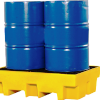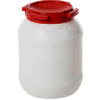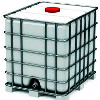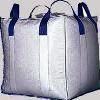Citric Acid Commercial Pure Solution & Crystals, IP BP USP ACS Analytical Reagent FCC Food Grade Manufacturers Suppliers, India
Anmol Chemicals are manufacturers of Specialty Chemicals and Pharmaceutical Excipients, in India. Anmol Chemicals Group has manufacturing facilities spread across India, representatives in Houston Chicago USA and toll manufacturers in China. We make IP, BP, USP, Ph Eur, FCC or Food Grade, ACS, AR or Analytical Reagent Grade, LR or Laboratory Reagent Grade and Pure Grades of various chemicals. All our items are analyzed to meet the required standards.
Our manufacturing facility is FDA GMP approved and ISO-9001, ISO 14000, OHSAS 18000, ISO 22000, FSSAI HACCP certified. We are offering products manufactured as per Kosher and Halal approved method. We are pre-registered with "Reach" for export to European countries.
Monohydrate CAS No.:5949-29-1, Molecular Weight: 210.14, Chemical Formula: C6H8O7.H2O
Anhydrous CAS No.:77-92-9, Molecular Weight: 192.13, Chemical Formula: C6H8O7
One of the most common acids in the world, citric acid is responsible for giving fruits like lemons and limes their characteristic tartness. Pure citric acid is available as a crystalline powder at gourmet cooking stores. In addition to giving any food item a citrus tang, citric acid crystals can be dissolved to make a citric acid solution, which you can use as a cleaning agent or to develop photos and other uses.
Specifications of Citric Acid Solution:
Assay (HOC(COOH)(CH2COOH)2): 48 - 52 %
Chloride (Cl): max. 0.001 %
Heavy Metals (as Pb): max. 0.001 %
Iron (Fe): max. 3 ppm
Phosphate (PO4): max. 0.001 %
Citric Acid Monohydrate BP
C6H8O7-H2O -- 210 -- 5949-29-1
Citric Acid BP Monohydrate
DEFINITION
2-Hydroxypropane-1,2,3-tricarboxylic acid monohydrate.
Content
99.5 per cent to 100.5 per cent (anhydrous substance).
CHARACTERS
Appearance
White or almost white, crystalline powder, colourless crystals or granules, efflorescent.
Solubility
Very soluble in water, freely soluble in ethanol (96 per cent).
IDENTIFICATION
First identification B, E.
Second identification A, C, D, E.
A. Dissolve 1 g in 10 ml of water. The solution is strongly acidic.
B. Infrared absorption spectrophotometry.
C. Add about 5 mg to a mixture of 1 ml of acetic anhydride and 3 ml of pyridine. A red colour develops.
D. Dissolve 0.5 g in 5 ml of water, neutralize using 1 M sodium hydroxide (about 7 ml), add 10 ml of calcium chloride solution R and heat to boiling. A white precipitate
is formed.
E. Water (see Tests).
TESTS
Appearance of solution
The solution is clear and not more intensely coloured than reference.
Dissolve 2.0 g in water and dilute to 10 ml with the same solvent.
Readily carbonizable substances
To 1.0 g in a cleaned test tube add 10 ml of sulphuric acid and immediately heat the mixture in a water-bath at 90 ± 1 °C for 60 min. Cool rapidly immediately
afterwards. The solution is not more intensely coloured than a mixture of 1 ml of red primary solution and 9 ml of yellow primary solution.
Oxalic acid
Maximum 360 ppm, calculated as anhydrous oxalic acid.
Sulphates
Maximum 150 ppm.
Aluminium
Maximum 0.2 ppm, if intended for use in the manufacture of dialysis solutions.
Heavy metals
Maximum 10 ppm.
Water
7.5 per cent to 9.0 per cent, determined on 0.500 g.
Sulphated ash
Maximum 0.1 per cent, determined on 1.0 g.
Bacterial endotoxins
Less than 0.5 IU/mg, if intended for use in the manufacture of parenteral dosage forms without a further appropriate procedure for the
removal of bacterial endotoxins.
Citric Acid Monohydrate USP
Citric Acid USP Monohydrate
C6H8O7·H2O 210.14
1,2,3-Propanetricarboxylic acid, 2-hydroxy-, monohydrate.
Citric Acid Monohydrate contains one molecule of water of hydration. It contains not less than 99.5 percent and not more than 100.5 percent of C6H8O7, calculated on the anhydrous basis.
Labeling— Where it is intended for use in dialysis solutions, it is so labeled. Where Citric Acid Monohydrate must be subjected to further processing during
the preparation of injectable dosage forms to ensure acceptable levels of bacterial endotoxins, it is so labeled. Where Citric Acid Monohydrate is sterile, it is so
labeled.
Identification, Infrared Absorption 197K— Dry the substance to be examined at 105 for 2 hours.
Bacterial endotoxins— The level of bacterial endotoxins is such that the requirement in the relevant dosage form monograph (s) in which Citric Acid Monohydrate
is used can be met.
Sterility— Where the label states that Citric Acid Monohydrate is sterile, it meets the requirements for Sterility, in the relevant dosage form monograph(s) in
which Citric Acid Monohydrate is used.
Water: between 7.5% and 9.0%.
Residue on ignition: Not more than 0.1%, determined on 1.0 g.
Readily carbonizable substances— To pass the test
Sulfate— 0.015%.
Heavy metals: 0.001%.
Limit of oxalic acid— 0.036%.
Citric Acid FCC Food Grade
C6H8O7 Formula wt, anhydrous 192.13
C6H8O7·H2O Formula wt, monohydrate 210.14
INS: 330 CAS: anhydrous [77-92-9]
CAS: monohydrate [5949-29-1]
DESCRIPTION
Citric Acid occurs as colorless, translucent crystals or as a white, granular to fine, crystalline powder. It is anhydrous or contains one molecule of water of
hydration. The hydrous form is efflorescent in dry air. It is odorless and has a strongly acid taste. One gram is soluble in about 0.5 mL of water, in about 2 mL of
alcohol, and in about 30 mL of ether.
Function: Sequestrant; dispersing agent; acidifier; flavoring agent.
REQUIREMENTS
Labeling: Indicate whether it is anhydrous or hydrous.
Identification: A 1:10 aqueous solution gives positive tests for Citrate.
Assay: Not less than 99.5% and not more than 100.5% of C6H8O7, calculated on
the anhydrous basis.
Lead: Not more than 0.5 mg/kg.
Oxalate: Passes test.
Readily Carbonizable: Substances Passes test.
Residue on Ignition: Not more than 0.05%.
Tridodecylamine (for solvent-extracted Citric Acid only)
Not more than 0.1 mg/kg.
Water: Anhydrous: Not more than 0.5%; Monohydrate: Not more than 8.8%.
Citric Acid ACS Analytical Reagent
Citric Acid, Anhydrous, and Citric Acid, Monohydrate
2-Hydroxy-1,2,3-propanetricarboxylic Acid
HOCOCH2C(OH)(COOH)CH2COOH; Formula Wt. 192.13
HOCOCH2C(OH)(COOH)CH2COOH-H2O; Formula Wt. 210.14
CAS Number 77-92-9 (Anhydrous); 5949-29-1 (Monohydrate)
REQUIREMENTS
Assay: 99.5% C6H8O7; 99.0-102.0% C6H8O7-H2O min
MAXIMUM ALLOWABLE
Insoluble matter: 0.005%
Residue after ignition: 0.02%
Chloride (Cl): 0.001%
Oxalate (C2O4): Passes test
Phosphate (PO4): 0.001%
Sulfate (SO4): 0.002%
Iron (Fe): 3 ppm
Lead (Pb): 2 ppm
Substances carbonizable by hot sulfuric acid: Passes test
Manufacturers
ANMOL CHEMICALS
S-8, SARIFA MANSION, 2ND PRINCIPAL SHAIKH HASAN MARG, MUMBAI 400009, INDIA
TEL: (OFF) 91-22-23726950, 23774610, 23723564. FAX: 91-22-23728264
e-mail: info@anmol.org
Copyright and Usual Disclaimer is Applicable
Exporters to USA, UAE, Europe, South Africa, Tanzania, Kenya, Egypt, Turkey, Nigeria, Uganda, Brazil, Chile, Argentina, Dubai etc.
Representatives in New York, Houston - Texas, Chicago - Illinois, Los Angeles.
Fast Selling IP BP USP ACS FCC Food Grades of Chemicals by Anmol Chemicals
Aluminum Chloride ---------- Ammonium Sulfate ----- Ammonium Persulfate
Aluminum Potassium Sulfate - Ammonium Chloride ---- Ammonium Bicarbonate
Ammonium Carbonate --------- Benzyl Alcohol ------- Boric Acid
Benzoic Acid --------------- Borax; Sodium Borate - Calcium Chloride
Calcium Hydroxide ---------- Calcium Acetate ------ Calcium Butyrate
Calcium Lactobionate ------- Calcium Levulinate --- Calcium Saccharate
Carbamide Peroxide --------- Citric Acid ---------- Calcium Phosphate
Calcium Oxide -------------- Calcium Sulfate ------ Chromic Chloride
Cupric Chloride ------------
Ferric Chloride ------------ Ferric Nitrate ------- Fumaric Acid
Gentian Violet ------------- Glacial Acetic Acid
Lactobionic Acid ----------- Magnesium Butyrate
Magnesium Oxide ------------ Magnesium Chloride --- Magnesium Sulfate
Malic Acid ----------------- Maleic Acid ---------- Manganese Chloride
Manganese Sulfate ---------- Methylene Blue ------- Oleic Acid
Octyldodecanol -------------
Propylene Carbonate -------- Potassium Acetate ---- Potassium Carbonate
Potassium Hydroxide -------- Potassium Chloride --- Potassium Phosphate
Potassium Bitartrate ------- Propylene Carbonate -- Selenious acid
Sodium Molybdate ----------- Sodium Perborate ----- Sodium Phosphate
Sodium Propionate ---------- Sodium Acetate ------- Sodium Bicarbonate
Sodium Hydroxide ----------- Sodium Chloride ------ Sodium Thiosulfate
Sodium Selenite ------------ Urea ----------------- Zinc Chloride
Other Best Selling Products
Ammonium Bromide ----------- Ammonium Phosphate --- Barium Chloride
Butylated Hydroxyanisole --- Butylated Hydroxytoluene
Calcium Nitrate Nitrite ---- Calcium Propionate --- Copper Sulfate
Ceric Ammonium Nitrate ----- Cinnamaldehyde ------- Isatoic Anhydride
Directly Compressible Calcium Carbonate ----------- Encapsulated Citric Acid
Encapsulated Fumaric Acid -- Encapsulated Sodium Bicarbonate -
Encapsulated Sorbic Acid
Potassium Bromide ---------- Potassium Iodide ----- Potassium Nitrate Nitrite
Sodium Bromate ------------- Skatole -------------- Sodium Butyrate
Sodium Nitrite & Nitrate --- Sodium Bromide ------- Sodium Diacetate
Sodium Formaldehyde Bisulfite Strontium Chloride -- Stannous Chloride
TBHQ Tertiary Butylhydroquinone












